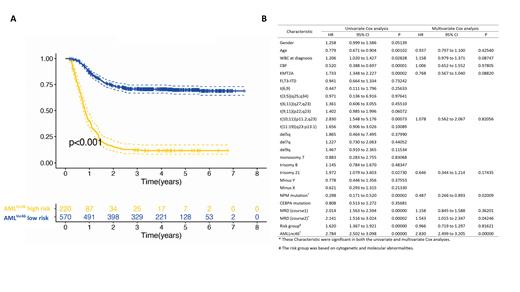Risk stratification using cytogenetics, mutations and minimal residual disease (MRD) has allowed to increase the cure rates of pediatric acute myeloid leukemia (AML), reaching now up to 70% in contemporary protocols. Nevertheless, approximately 30% of patients still experience relapse, indicating that there is a need to optimize stratification strategies. Recently, long non-coding RNA (lncRNA) expression has been shown to hold prognostic power in multiple cancer types. Here, we built a 46 relapse-related lncRNAs prognostic signature, named AML lnc46, using 790 pediatric acute myeloid leukemia transcriptomes obtained from the Therapeutically Applicable Research To Generate Effective Treatments (TARGET) repository. Bootstrap validation (bootstrap resampling times = 1000) was used for internal validation and showed that the signature performed good in predicting the 1-, 2-, and 3-year relapse-free survival (RFS), with an area under the curve of 0.825, 0.824, and 0.822, respectively. Moreover, external validation using the TARGET repository validated the efficiency of the signature. Most importantly, we demonstrate that AML lnc46 not only is an independent predictor of RFS, but also identifies patients who were assigned a different risk-group by currently-used classification methods. In conclusion, the identified AML lnc46 might, after further prospective validation, provide additional information to guide management of pediatric AML patients.
Figure 1. (A) Kaplan-Meier survival curve of relapse-free survival of high-and-low risk AML lnc46 pediatric AML patients, (B) Univariate and multivariate independent Cox regression analyses of known clinical and molecular characteristics and the AML lnc46 signature.
Disclosures
No relevant conflicts of interest to declare.


This feature is available to Subscribers Only
Sign In or Create an Account Close Modal